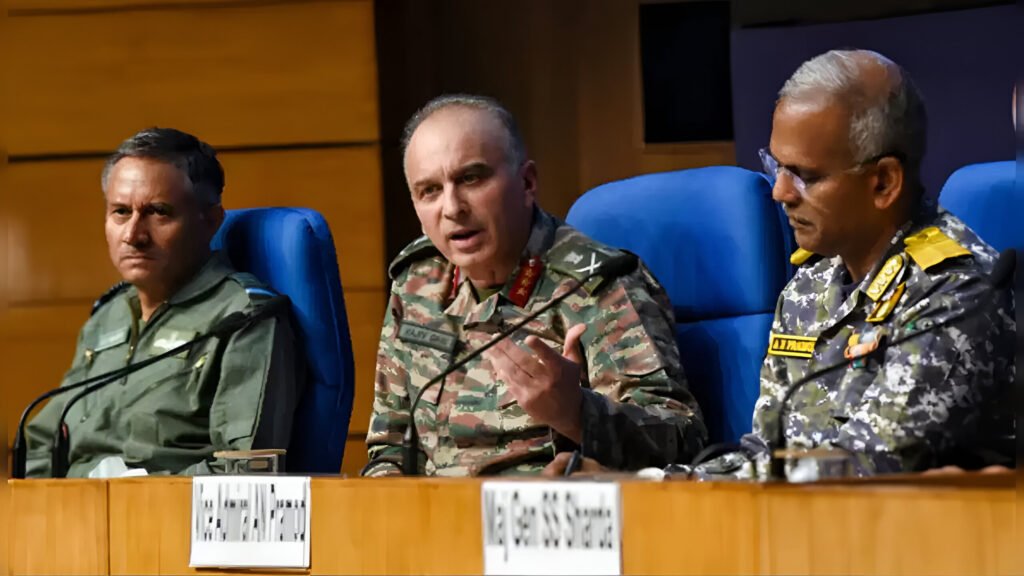
India-Pak Tensions: DGMO Talks at Noon, Army Briefing at 2:30 PM TodayCurrent Geopolitical Developments: A Focus on Pahalgam and Its Consequential Events
The increase in tensions between India and Pakistan is mostly due to the gruesome terrorist attack that occurred on the 22nd of April in Pahalgam, Jammu, and Kashmir. The attack, in which the bodies of 26 Indian tourists, along with a Nepali citizen, were claimed, shook the very fundamentals of Indo-Pak peace. India blamed the Islamic Resistance Front, a splinter group of Lashkar-e-Taiba based out of Pakistan, for the assault. Further, investigations pinpointed Hashim Musa, a disgraced para commandos of Pakistan’s elite Special Service Group who joined the banned shadowy terror outfit after being let go. The subsequent military standstill marked a new, much colder period in officially amicable India-Pakistan relations. Subsequent to this incident came a flurry of retaliatory actions and aggressive military posture from both sides.
Operation Sindoor: India’s Strategic Retaliation Oil detailing the Pahalgam attack, India launched “Sindoor” on 7th May, 2025. The operation consisted of a set of 14 progressive strikes over nine targets located in Pak-controlled Kashmir and the Punjab province of Pakistan. The Indian Air Force sent out Rafale jets armed with SCALP missiles and AASM Hammer bombs, conducting the operation in a span of 23 minutes. India proclaimed the strikes as “focused, measured, and non-escalatory,” striking at terror bases without touching the military facilities of Pakistan.
Ceasefire Violations and Drone Warfare
The outcome from Operation Sindoor didn’t reshape border stability, as volatility near the LoC remained extremely high. Reports from the border indicated instances of ceasefire violations by Pakistani forces over the LoC, which prompted proportionate actions by the Indian army. Drones and missile systems were used for the very first time in this military conflict as both countries adopted rapid technology advancement. Also, India deployed the S-400 missile system Sudarshan for the first time in real action, effectively cancelling out incoming threats.
The Impact on International Relationships and Global Diplomacy
The conflict in Kashmir has raged for years, even leading to nuclear tensions, which resulted in intense global diplomatic tensions. India put on suspension the Indus Riparian Treaty (IWT) and Shimla Agreement. Pakistani diplomats in India were expelled, and travel restrictions for Pakistanis were put in place. In retaliation, Pakistan put a ban on Indian air traffic and revoked trade ties. The United Nations also intervened by asking both countries not to take any drastic steps, while Russia and Iran offered to act as mediators to the issue. The United States also granted Pakistan-India relations importance and asked for floating tension de-escalation.

Disengagement of Forces In: A Step Towards De-Escalation
As part of reducing large-scale hostilities, India and Pakistan will be represented by their Directors General of Military Operations (DGMO) today at noon to hold a talk. The main goals of the discussion will be to address the latest violations of the ceasefire agreement and figure out ways to avoid a future escalation. This is pivotal and critical to restoring lines of communication that actively work and trust necessary and fundamental to reuniting both armies. Reportedly, the Indian Army will hold a debriefing for the officers at 14:30, wherein they will see if developments that occurred suit India’s future political strategies and decide components of the new programs to be presented.
Civilian Consequences and Humanitarian Issues
Hostilities continue to affect the lives of the civilian population in the border area. Consistent shelling and cross-border firing have resulted in fatalities, displacement, and mental trauma among people in the area. Both state actors have increasing demands to protect and ensure the security and welfare of their citizens. Humanitarian agencies have appealed for action to mitigate the hostilities and assist those in need.
The Path Forward: Managing a Sensitive Peace
The whole world is watching the conversations going on at the DGMO level between India and Pakistan. The adjacent causes of concern that come with the conflict between the two nuclear superpowers have brought hope from the world to lift the tensions. If not tackled properly, this region can fall prey to more conflict due to the circumstantial volatility in place. Lasting peace will need more than the military to back off; it will take political determination and good faith. The impending days are important in deciding whether the two nations will settle beyond this crisis or continue in volatile conditions for a longer-term, nit-and-bolt coexistence.











